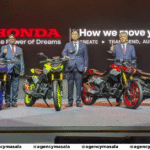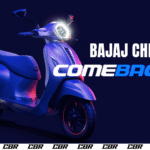India’s roads are fast, unpredictable, and deadly. In 2022 alone, 1.68 lakh people lost their lives in road crashes – nearly 45% were two-wheeler users. With a new mandate that makes ABS (Anti-lock Braking System) compulsory on all new two-wheelers, India is taking a long-overdue step toward safer streets. But here’s the real question — is better tech enough when the core problem lies elsewhere?
What the New Rule Says: A Quick Summary
- All new two-wheelers (including those below 125cc) must now be equipped with ABS.
- Two BIS-certified helmets must be provided with every new purchase.
- The move is aimed at reducing fatalities and improving braking efficiency, especially in panic situations.
The Hidden Cost of Safety Tech
- Inexpensive bikes like the Bajaj CT 100 used to cost Rs 33,393 in 2020. Now, the entry-level Platina 100 stands at Rs 68,262.
- Adding ABS and disc brakes could bump up costs by Rs 3,000–5,000, a big deal in the ultra-price-sensitive commuter segment.
- These cost hikes come on top of increased BS6 compliance, safety norms, and pandemic-related disruptions — all contributing to the Indian two-wheeler industry still lagging behind its FY2019 sales peak.
The Bigger Problem: Human Behavior on Indian Roads
No matter how advanced the vehicle tech, reckless road behavior continues to be the real killer.
Key concerns:
- Signal-breaking and wrong-side driving are rampant.
- No lane discipline; people often drive in whichever direction is convenient.
- Overtaking from the left, driving on pavements, and aggressive honking are all too common.
- Shockingly, wrong-side driving was the 2nd biggest cause of road deaths in 2022 — higher than even drunk driving.
Road Surface Conditions: An Invisible Threat to Bikers
- Uneven concrete slabs, potholes, and patchy repairs can throw a motorcyclist off balance in seconds.
- Roads with mastic asphalt, especially common in Maharashtra, become slippery death traps when it rains.
- Lack of proper reflectors or lane markings further increase risks at night.
Two-Wheelers: The Most Vulnerable
- With 75% of India’s two-wheelers under 125cc, they dominate the roads but are often the least safe.
- Many low-cost models still use drum brakes, poor grip tyres, and lack modern braking aids.
- ABS can make a real difference — especially in avoiding lockups during emergency braking.
What’s Good About This Mandate
- More lives will be saved during panic braking and wet road conditions.
- Braking distance will reduce, giving riders better control.
- Helmets being made compulsory with every vehicle sale is a long-overdue move.
- It will push manufacturers to raise safety standards even on budget bikes.
But Here’s What Still Needs to Change
1. Road User Education
Mandatory road etiquette lessons in schools, stricter tests at RTOs, and public awareness campaigns can change the game.
2. Strict Law Enforcement
Zero tolerance for signal-jumping, drunk driving, and wrong-side riders — supported by AI-driven traffic cams and heavy penalties.
3. Safer Infrastructure
Fix roads, improve signage, better lighting, and more visibility for motorcyclists especially on rural or less-patrolled roads.
4. Speed Limit Enforcement
Most fatal crashes are due to overspeeding, often in urban and semi-urban zones. Controlled speeds save lives.
5. Affordable Safety Upgrades
The government should incentivize or subsidize safety tech like ABS, especially for the entry-level two-wheeler segment.
Conclusion:
The new ABS mandate is a strong signal — India is waking up to its road safety emergency. But technology alone can’t fix what poor behavior, bad roads, and weak enforcement continue to break. For real change, India needs a multi-layered approach — one that combines tech, enforcement, education, and infrastructure to create roads that don’t just move people, but keep them alive.







